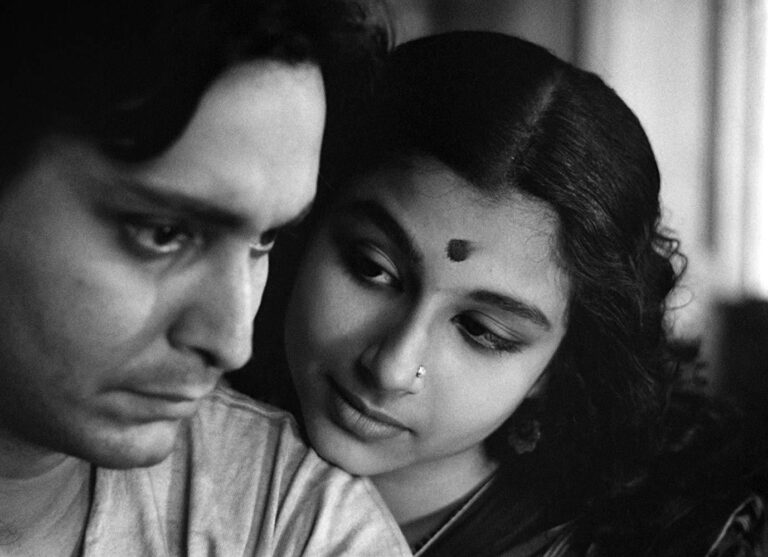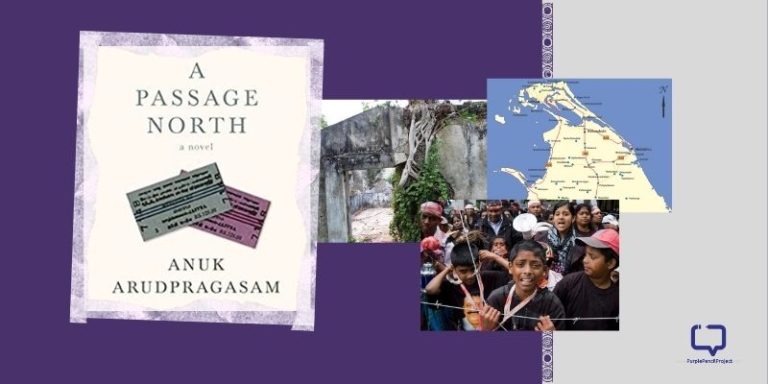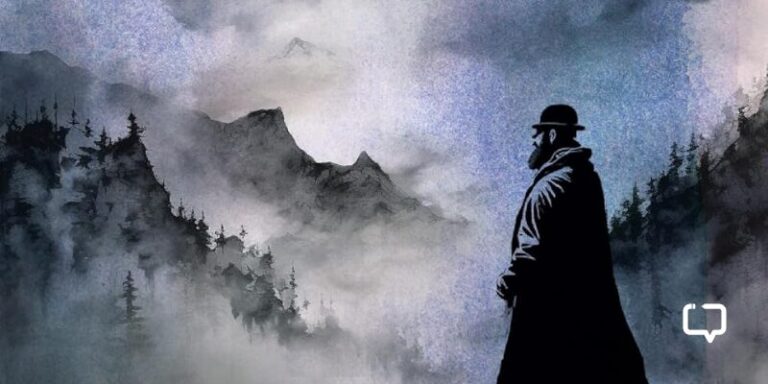Priyadarshi Gauri reviews Nanda Devi by Sandeep Madadi which reads more like a long-form essay than a thorough textbook exploration of the topic but is an easy read.
Move beyond casual statements like, “We Indians will worship anything, even a stone,” and you will find stories that lie at the intersection of folklore, geography, mythology, and history. In small villages situated in the wilderness, deep inside the mountains away from the internet or medical facilities, there are communities that live at the mercy of nature and fear its fury more than anything. Speak to the locals sans judgement and they will tell you why they subscribe to a certain belief.
We encourage you to buy books from a local bookstore. If that is not possible, please use the links on the page and support us. Thank you.
From my comfortable perch in Delhi, the mountains are no more than a faraway elevated landmass. But I have also stood at the base of mountains and could not help but bow to their natural, ancient majesty.
In the Chamoli Garhwal district of Uttarakhand, flanked by the Rishi Ganga valley on the west and the Goriganga valley on the east are the mighty Nanda Devi, the second highest peak of India, and the patron goddess of the locals of Garhwal and Kumaon region.
Fascinated by the fable of this Goddess who resides in the form of a mountain, guarded by a ring of peaks and a terrifying gorge, “a place”, Ruttledge famously said, “about seventy-five miles from Almora, yet hitherto more inaccessible than the North Pole”, and the hardest climb of Tenzing Norgay’s life, Sandeep Madadi was reminded of the mythical Shangri-La that he read about and believed in as a child.
He decided to write about Nanda Devi, and despite his limitations as a mountain climber. He also decided to get as physically close to the peak as possible, which while was not much, was still the hardest trek he might have undertaken and lived to tell the tale.
Surviving the trek is not easy, and even the most experienced mountaineers are at the mercy of the temperamental “Bliss-giving Goddess” Nanda Devi. This story of Madadi’s modest quest to Nanda Devi is interspersed with the history of mountaineering expeditions and a generous dose of folklore.
The Divine Legend(s)
Like Madadi, the author Bill Aitken also read about the legend and wanted to reach the base of the mountain to pay his respects to the goddess. In some stories, she is the manifestation of goddess Parvati, in others, she is a royal princess who ran away from an invading prince and merged with the mountain.
“Is Nanda Devi more than a mountain?” asks Bill Aitken. “The answer is ‘yes’ if you are brought up to believe in her as a local hill deity and ‘no’ if you are unalive to the religio-cultural associations of Uttarakhand.” It is this religio-cultural association that Madadi explores in this book.
The lives of the aboriginal Bhotiya tribal inhabitants of Niti Valley that worship the mountain are inextricably linked to it, as is their livelihood. Originally traders across the Indo-China border, they had to adapt following the Indo-China war and make a name for themselves as high-altitude porters for the spate of mountaineering expeditions in the 70s.
“Even an agnostic like me couldn’t help but appreciate the fact that these indigenous tribals are worshipping their own mother nature, not the mere idols; Bhumiyal Devta (God of the Earth), Ghasya Devta (God of Grass), and Nanda Devi (Mountain Goddess) are their deities. It was quite unlike the Hinduism I had known.”
The Legendary
Madadi also traces the history of exploration and expedition attempts on Nanda Devi, ranging from the more modest early attempts to penetrate the inner sanctuary and reach its base to the later, more ambitious, and dangerous attempts to ascend the peak. These attempts often failed, but occasionally, when the Goddess smiled, were successful, and in both cases contributed to the central legend of the mountain.
The most affecting is the story of a young American girl called Nanda Devi Unsoeld, who attempted to scale the mountain that she was named after, only to perish and be committed to the same mountain by her father. To him, she had been the goddess personified. “Death is not too high a price to pay for a life fully lived”, reflected Devi’s mother.
Through this history of expeditions, Madadi also discusses the ecological and economic questions that arise out of an activity like mountaineering, and the extreme yet ineffective policies of the government that failed to create a balance between the two.
He explains how a complete ban on entering the sanctuary not only affected the sustainable livelihood of the Bhotiya tribe but also gave free rein to the poachers, who no longer needed to worry about getting found out. He also mentions how only thirty-five families from the Bhotiya community remain in the valley, most having migrated in search of livelihood.
Three Men on the Mountain
A self-confessed wannabe but a never-been mountaineer, Madadi somehow convinces two of his friends (one of them physically unfit, the other characteristically uncommunicative, both also never-been mountaineers) to go on this adventure to get a glimpse of the Devi that none of them is experienced to undertake.
What results is a very realistic and unintentionally funny travelogue of three very incapable men, driven up the mountain by the author’s sheer obsession and with a lot of help from the expert high-altitude Bhutiya porters. “As the view keeps getting better with every inch you gain from here; one has to be mindful of the risks associated with them.” The three men also provide a foil against which the heroics of the formidable and resilient Bhotiya tribe stand out even more.
In conclusion
Sandeep Madadi is not the first to write about Nanda Devi, nor would he be the last. And while the book reads more like a long-form essay than a thorough textbook exploration of the topic, it is an easy read, and Madadi packs in enough information in under 130 pages to pique my interest in this formidable mountain goddess.
It could be your gateway drug to other books on the subject, such as those written by Bill Aitken and Eric Shipton, both heavily relied upon in this book. Perchance, you may find yourself at the feet of the mountain, looking up reverently, for in the words of Aitken,
“The simplest way to find out whether Nanda Devi is a timeless vision or hard rock vertically disposed is to escape hearsay and go see for yourself.”
Best Quote from Nanda Devi
“Who would like to stay in a village with no primary healthcare centre or a school? In this era of digital connectivity, most of the twenty-four villages of Niti valley remain cut off from the rest of the world with no mobile network coverage.”
Have you read this journey of grit and determination? What do you think of it? Drop a comment below and let us know!





















